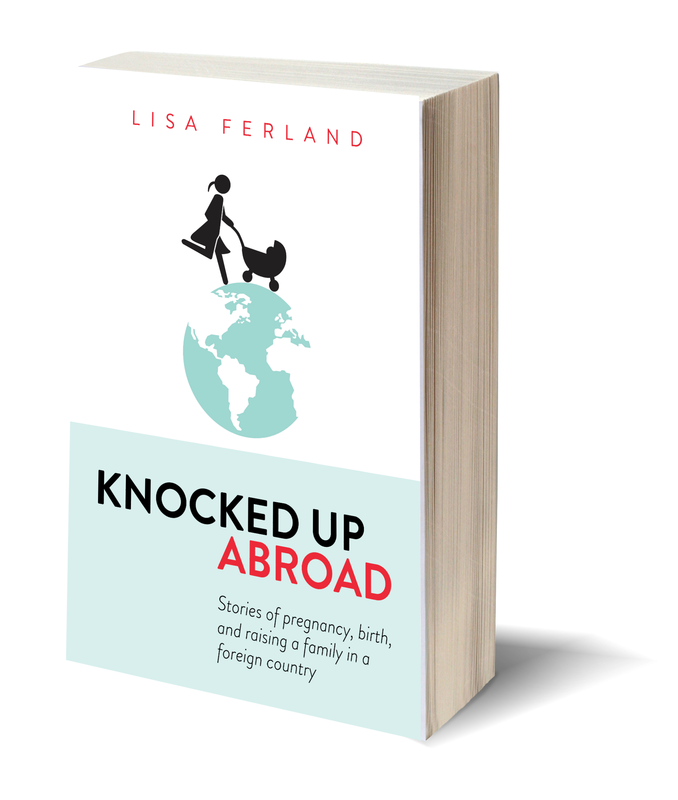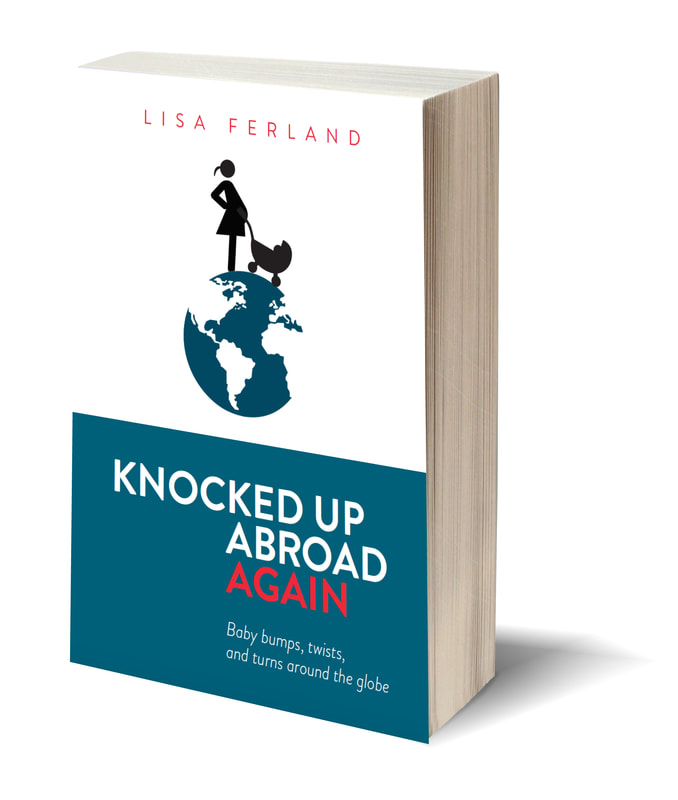|
Jo spoke to Lisa Ferland, the brains behind the Knocked Up Abroad series of books, both of which she crowdfunded. Intrigued to know more about the crowdfunding process Jo was delighted to learn that Lisa is now coaching new writers with their own campaigns. Jo: Lisa, you have successfully devised, planned, compiled, edited and published two books now in the Knocked-Up Abroad series. Well done! I recall I was invited to donate for your crowdfunding campaign for the second book and I duly donated willingly. But, before I ask you a few of my burning questions about crowdfunding, could you tell the readers a little about your book, what it’s about, who is it for and so on, please? Lisa: Thanks so much for backing the second book, Jo, it was a labor of love. The Knocked Up Abroad series is all about the various approaches to pregnancy, birth, and motherhood that women experience when they are living in a foreign country. The first book was intended to be a humorous take on the fish-out-of-water scenarios that pregnant women often feel when they don't know the language, local customs, or practices around childrearing, but the stories ended up being much more heartfelt and emotional than I anticipated. The second book came about from pure momentum after I published the first and readers were clamoring for more stories from more countries. What I love best about the books is that they are reassuring, non-judgmental stories about real women who are experiencing real struggles and loss and yet the bond between mother and child is the same regardless of country of birth or mother tongue. Giving birth anywhere is an undeniably life-changing event, and readers really connect with these stories. Jo: Okay, so onto crowdfunding… I actually crowdfunded a book myself last year, so we could publish a pro-bono book I produced with the aid of the Parfitt-Pascoe Writing Residents from the Families in Transition Conference. This book, called Insights and Interviews from the 2016 Families Global Transition Conference, reached its £1,500 target with fewer than 20 people. All of whom I knew and were familiar with FIGT. Was I lucky or did I get something right?
Lisa: I'd say that your campaign goal was set appropriately and you successfully targeted the audience who cared the most about seeing your project come to life—excellent strategy. If you wanted to crowdfund a higher amount, you need more than 20 backers to generate the type of momentum that happens when you have 100+ backers re-sharing your campaign. The best part about starting another campaign on the same platform is that your former backers will be alerted when you create a new project. That means the 20 backers who supported you the first time are more likely to be automatically interested in your next project, which allows you to focus on reaching new people. Jo: What do you think are the crucial must-have-in-place items you need if a book is to have a hope of reaching its crowdfunding goal? Lisa: It is crucial to have to have a pre-launch strategy that plans out every day of your campaign. As soon as you launch, you're not going to have much time or creative energy to create anything new so everything should be created during the pre-launch phase—social media graphics, articles for third-party websites, blogs, milestones, etc., Authors need to bring their audience to the crowdfunding platform (readers don't browse Kickstarter looking for new books), so it's important that you have multiple streams for new people to find you. Everything should be created in a way that best connects with your readers, and makes them want to share. It is also important to back a few projects on the platform before you create your campaign. You'll experience what your backers will go through and that's such an important perspective to have as a creator. When setting your rewards, it's important to give your backers twice the value. How you do that is the challenge, but backers love to feel like they are getting real value for their money. Jo: We did all the collating, writing and editing of our book on a voluntary basis because FIGT is a not-for-profit and this is part of my own philanthropy. I know £1,500 is cheap. How much do you usually suggest authors need to raise in order to produce a book, so that’s for editing, proofreading, design, digitisation, and publication? Lisa: Every book has different costs, but I'd say that at the very least, an author of an all-text, no illustration paperback book is going to want to raise at least $4k-$8k to cover all of the costs related to publishing and the crowdfunding platform fees. My suggestion is to map out all of your anticipated costs, and then add a fudge factor to set your campaign goal amount. One strategy that I've seen work very well is when an author sets a small target goal ($2k) and exceeds it by 800% to make it to the top of the Kickstarter and IndieGoGo "Most Popular" lists. Making it on these lists helps reach new eyes and grabs in new backers on the platform who wouldn't have found your book otherwise. However, I've also seen it backfire, and authors who ran successful campaigns at that lower target amount still need to pay out of pocket because their actual costs were much higher than their stated goal amount. Again, it's all about your pre-launch strategy, audience, and rate of engagement. Jo: Tell me about your books. The nitty gritty details. I’d like to know how much you tried to raise, how long it took to raise it, what the average donation was and how many people donated. Was this deemed a success? Lisa: The Kickstarter campaign for Knocked Up Abroad Again was successful and closed with 108% funding. Our goal was $10k, and we reached that amount one week before the end of the campaign, which was great because I was so stressed. The campaign generated 302 pre-orders from 277 backers, and the average pledge was $39. I was very happy to have backers support the project every day of the campaign. On IndieGoGo, I worked with the Marie Curie Alumni Association to crowdfund their book, My Super Science Heroes. That book raised €18,315 EUR raised by 394 backers and had a €15k target goal (122%). It was a massive success, and the IndieGoGo campaign grabbed the attention of a traditional children's publisher who took over the process after the campaign was over. We experienced a huge issue on launch day that probably cost the campaign thousands of euros. The bank information wasn't finalized when we launched (something IndieGoGo said didn't need to be completed until after the campaign was over), and IndieGoGo froze all pledge payments. It was a bit of a scramble, and we recovered, but we lost a lot of momentum that we had built and all of the emails and press we had directing people to the campaign page on launch day was lost. Jo: We all make mistakes along the way. Could you share some of the mistakes you made and have learned from to do with crowdfunding? Lisa: Crowdfunding is such a humbling experience. I have learned that some people who said they would support you 100% no questions asked never do whereas, some people with whom you haven't spoken in years come out of the blue with a huge pledge amount. It is a vulnerable and emotional experience to put your work out for public consumption and ask for support. People can watch you fail in real-time, so it's a high stakes, high pressure experiment. I modeled my social media messages based on what another author did to raise $30k on IndieGoGo. What I failed to realize was that my audience didn't respond well to images with text on them, whereas her audience did. My posts were reaching only 2% of my Facebook audience, and I scrapped my entire pre-launch plan and created a ton of new material on the fly. My readers really liked articles, blogs, and funny insights, so I started writing furiously to engage them and get them to share. My advice is to create more of what you know your audience likes and add a call to action and link to your campaign in everything you create. Sure, you can and should learn from other people's campaigns, but it is impossible to know all of the networking and emailing they are doing in the background that is contributing to their success. Jo: What crowdfunding platforms do you recommend and why? Lisa: I've successfully funded books on Kickstarter and IndieGoGo and absolutely recommend them both. Kickstarter is great because it's always all-or-nothing. This puts pressure on the backers to share the project to help you reach your goal. All-or-nothing campaigns have a much higher success rate than campaigns without a deadline. IndieGoGo has both all-or-nothing and flexible funding campaigns, but I recommend all-or-nothing for the reasons already mentioned. Backers who see flexible funding campaigns believe that the book will be available at a later date and they'll buy it then (even if they won't). I love IndieGoGo because you get the backers' names and emails as soon as they pledge and can follow up with them directly using a newsletter provider like MailChimp. Kickstarter hides backers' emails from the creator until your campaign is over and successful. Unfortunately, this means that all messages sent during the campaign come from the Kickstarter platform, which doesn't have the same personal touch as IndieGoGo. That said, you can find success on both platforms with very similar strategies. They are adding new features all of the time that make it easier to interact with and reward backers. Jo: I understand that you are now offering to coach other would-be authors through their own crowdfunding process. Good for you! Could you tell me a bit about your service, what it will cost, how long the process is likely to take and how you are going to monitor the results? Lisa: Crowdfunding is such a stressful experience that it is really necessary to have someone to support you and encourage you to keep going through the low points of the campaign. I relied heavily on my contributors who were my teammates during the campaign. If you’re doing it solo, it’s important to have someone in your corner who knows what you’re going through. I offer two services to authors who are interested in crowdfunding—one-to-one crowdfunding coaching which involves customized pre-launch strategizing sessions, and support during the launch phase. I check in with authors every Monday during the campaign to do a status update, see if anything needs adjusting, and to give them encouragement, ideas, and support. That service is $650 + 5% of total funds raised when the campaign is successful. The percentage ensures that I’m invested in your success and will work hard to get more backers to your campaign. https://lisaferland.com/crowdfunding-coaching/ I also offer authors a Pick My Brain session that has been extremely valuable for authors who are still in the pre-launch phase. This service is a 1 hour, 20-minute information and value-packed strategizing session and I send a detailed summary of the discussion with action items. Authors receive a detailed plan for launch day and every day of the campaign based on what you think will work best for your audience to build momentum and engagement from your backers. This service is $225 for creators. https://lisaferland.com/pick-my-brain-crowdfunding-session/ Jo: Although I have now experienced crowd-funding and regularly donate to worthwhile campaigns myself, I have often chosen to look for advertisers or sponsors for books instead. This means that I ask fewer people for more money, and it tends to be quicker, but there is no doubt that fundraising can be a long slog however you do it. When do you think crowdfunding is the perfect solution? Lisa: Fundraising is always a ton of work no matter how you approach it, but I think that crowdfunding can be self-sustainable once you've developed a loyal following. I've seen people create project after project that snowballs into a string of successfully funded campaigns. If you have a high-quality book that resonates with your readers and you deliver consistently, I think crowdfunding is a great solution. Jo: I would put the success of my own campaign down to having a ready-made network I could reach out to. Do you think I am correct and, in your experience, how large a network do you think an author needs to have if they are to be successful in their crowdfunding campaign? Lisa: Authors need to bring their audience to the crowdfunding platform, and the majority of your backers will be people you know personally. Doing the math in reverse, if you need to raise $8k, and the average raised per person is $40, that's 200 people who need to support your campaign. It's impossible to know how many of your friends and family will back your campaign, but let's say they back at a rate of 10% (1 in 10 people you email backs your campaign). That means you need to get your message in front of at least 2,000 people to have a chance of success. Open up your contacts list and create a spreadsheet because you'll want to track who you've emailed and if they are on board or not so you can follow up with them (or not) accordingly. Jo: Thank you so much for answering my questions. Please tell the readers how they can contact you and find out more about your books and your services? Lisa: Thanks so much for this interview, Jo. I'm happy to have a free 20-min chat with anyone who is interested in learning more about the crowdfunding services I offer. More information is available on https://lisaferland.com/ |
�
All the latest news from the team at Summertime Publishing
As an Amazon Associate, we may earn a commission from qualifying purchases. This does not affect the price you pay or your consumer rights.
Archives
June 2024
|



